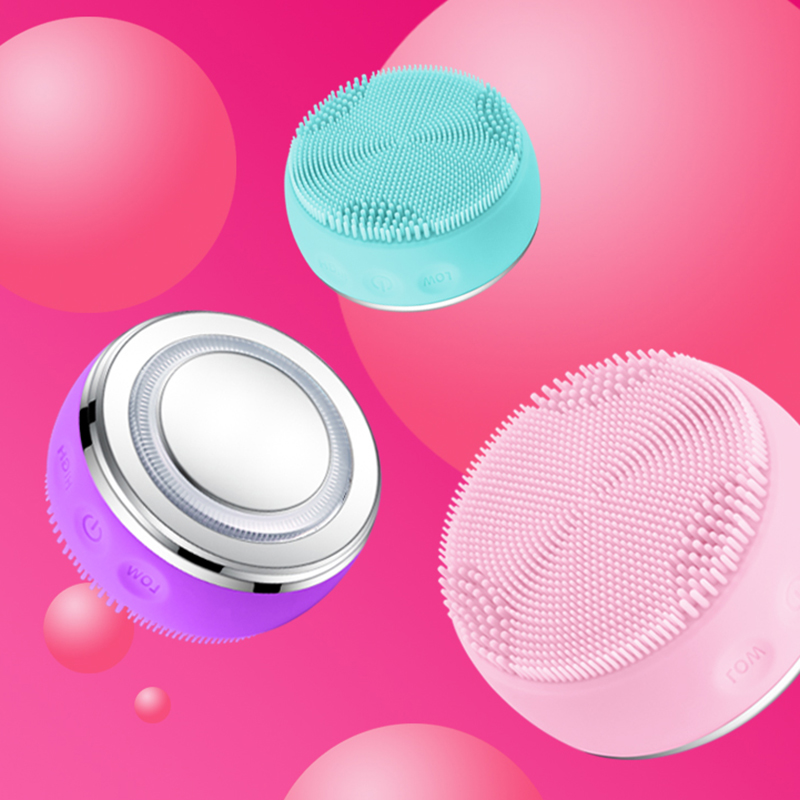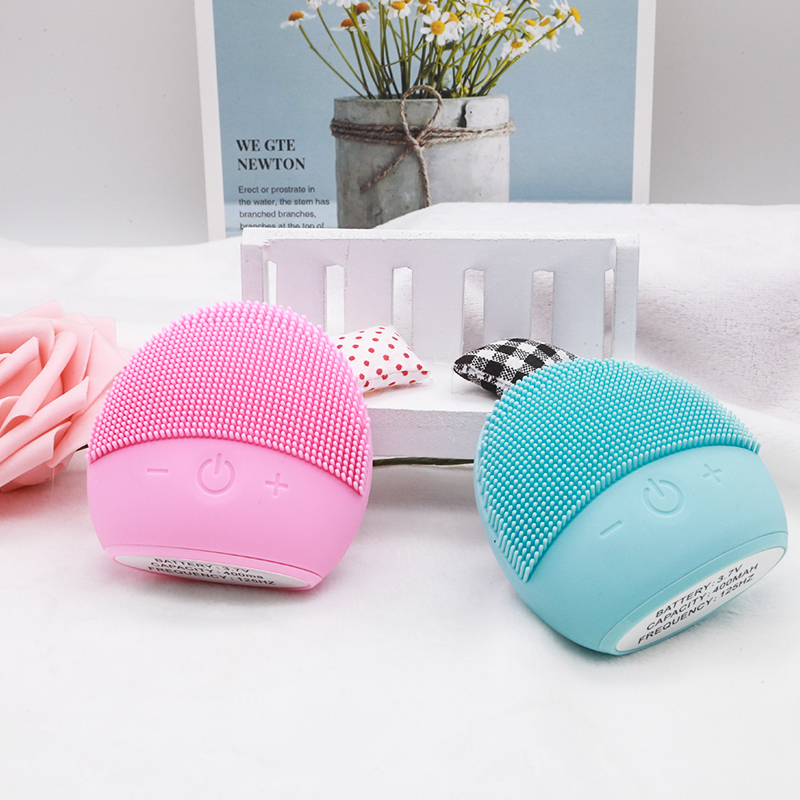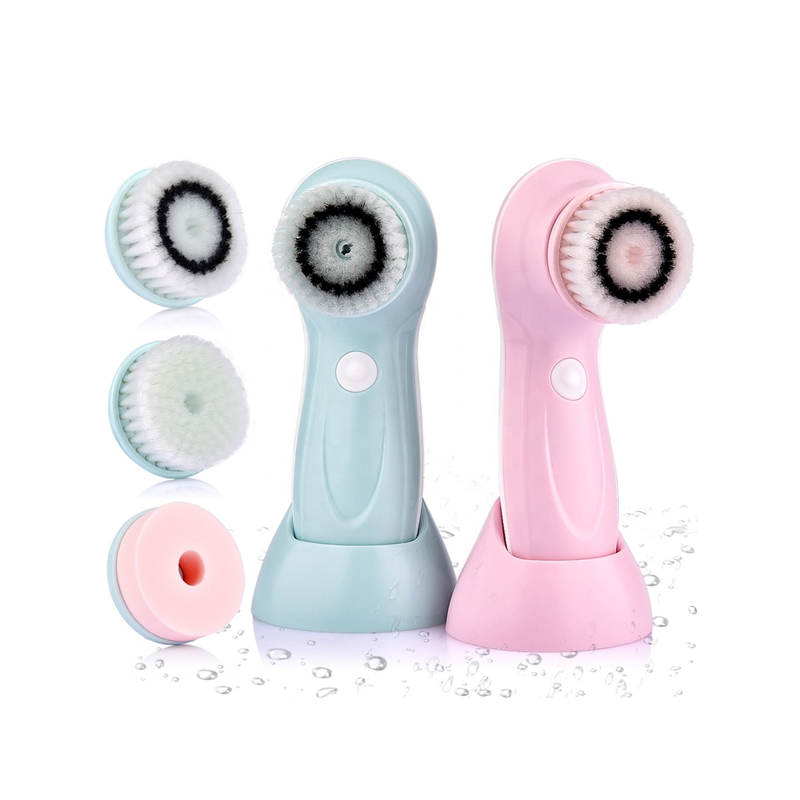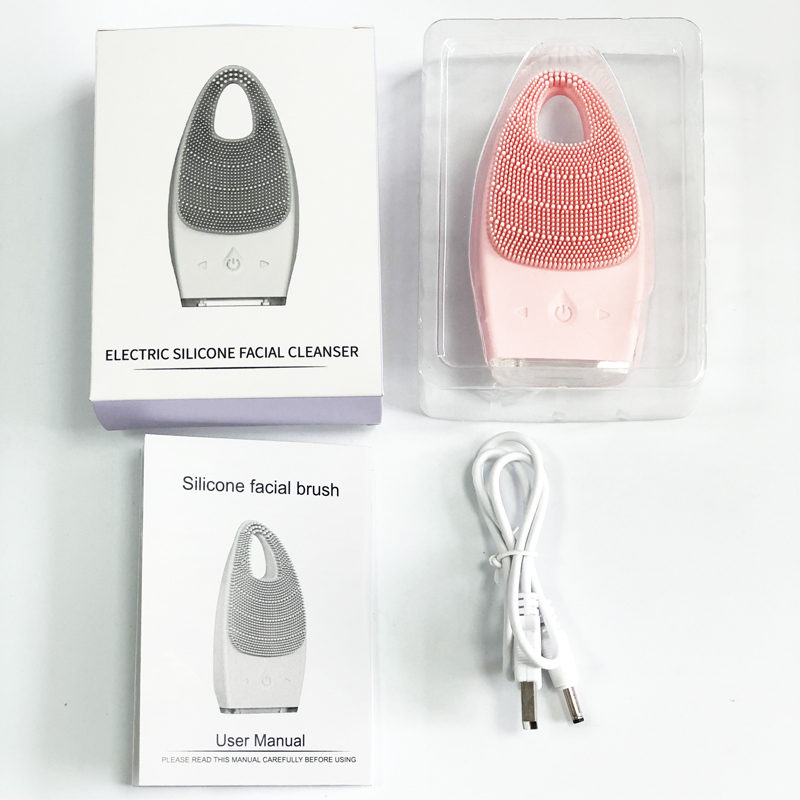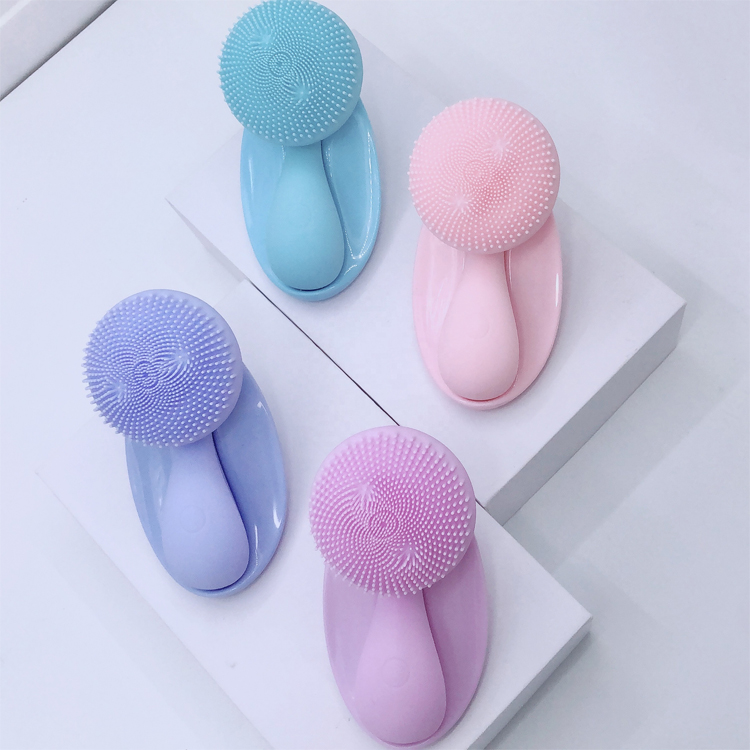How often should you deep-clean your facial brush?
Summary
Facial brushes are popular skincare tools designed to enhance the cleansing process and promote skin health. They come in various types, including manual, electric, sonic, and silicone brushes, each offering unique benefits tailored to different skin needs and preferences. Regular use of these brushes can aid in removing makeup, dirt, and dead skin cells, but their efficacy hinges on proper maintenance, particularly in terms of cleaning frequency. Understanding how often to deep-clean facial brushes is crucial for preventing skin issues such as acne, irritation, and bacterial infections that can arise from improper hygiene practices.
Experts recommend cleaning facial brushes at least once every two weeks; however, for individuals who wear makeup daily, a more frequent weekly deep clean is advised to avoid product buildup and potential skin problems.
The method of cleaning also matters; a deep clean typically involves using mild soap or specialized brush cleaners, while quick maintenance options include alcohol-based sprays for sanitizing between thorough washes.
These guidelines help ensure that brushes remain effective and hygienic, ultimately supporting healthier skin. Several factors influence the frequency of cleaning, including environmental conditions, skin type, and usage habits. For instance, individuals living in polluted areas or those with oily skin may need to clean their brushes more frequently to combat the accelerated accumulation of grime and bacteria.
Moreover, seasonal changes can necessitate adjustments in cleaning frequency; warmer, humid weather may lead to increased perspiration, while colder months might call for regular hygiene to prevent irritation from accumulated products.
In summary, maintaining a consistent cleaning regimen for facial brushes is essential for skin health. Neglecting this routine can lead to significant issues, including bacterial growth, unpleasant odors, and visible product buildup, which can negatively impact the efficacy of the brushes and the overall skincare routine.
Therefore, adhering to recommended cleaning practices is vital for anyone looking to maximize the benefits of their facial brushes and ensure a clear, healthy complexion.
Types of Facial Brushes
Facial brushes come in various types, each designed to meet specific skincare needs and preferences. The main categories include manual brushes, electric brushes, and silicone brushes, each offering unique features and benefits.
Manual Brushes
Manual facial brushes are typically hand-held tools that feature soft bristles for cleansing the skin. They require no batteries or power source and rely on the user's hand motions to work. These brushes are often designed with gentle bristles to suit various skin types, including sensitive skin, and are used in circular motions to exfoliate and cleanse the face effectively.
Electric Brushes
Electric facial brushes have gained popularity for their ability to provide a deeper clean than manual brushes. They often feature rotating or oscillating bristle heads, which help to remove makeup, dirt, and dead skin cells more efficiently than hand washing alone. Some models come with adjustable speed settings to cater to different skin types and personal preferences, allowing for a customizable cleansing experience. Many electric brushes also have automatic timers to ensure that users do not over-exfoliate, which can lead to skin irritation.
Sonic Brushes
Sonic facial brushes use gentle sonic vibrations to cleanse the skin, making them suitable for individuals with sensitive skin. These brushes typically feature silicone touchpoints rather than traditional bristles, offering a softer touch that can effectively clean without causing additional stress to the skin barrier. The vibrations help to dislodge dirt and makeup, promoting a more thorough clean without the abrasiveness of nylon bristles.
Silicone Brushes
Silicone brushes are a subcategory of facial brushes that have gained attention for their hypoallergenic properties and gentler touch. The nonporous silicone bristles are less abrasive than traditional nylon bristles, making them ideal for preserving the skin barrier. They can be easier to clean and are often more resistant to bacteria buildup. These brushes are suitable for all skin types, particularly sensitive skin, as they offer a gentle cleansing experience without the risk of irritation associated with harder bristles.
Recommended Cleaning Frequency
It is essential to maintain a regular cleaning schedule for your facial brushes to ensure optimal skin health and tool longevity. Dermatologist Nazanin Saedi advises replacing makeup brushes every two years, with an emphasis on cleaning them frequently to prevent buildup and maintain hygiene.
General Guidelines for Cleaning
For individuals using facial brushes regularly, a general recommendation is to clean these tools at least once every two weeks. However, for those who apply makeup daily, a more frequent weekly deep clean is advisable to avoid issues such as acne and skin irritation caused by bacteria and product buildup.
Deep Cleaning Methods
A deep clean can be achieved using a mild shampoo or specialized brush cleaner mixed with warm water. This solution can be applied using a silicone brush cleaning pad, which aids in removing residual makeup and dirt effectively. After cleaning, brushes should be rinsed thoroughly and laid flat on a clean towel to dry, maintaining their shape and preventing bacterial growth.
Quick Maintenance Options
On days when time is limited, a quick spray of an alcohol-based brush cleaner can be used for sanitizing brushes between thorough cleanings. This method serves as a temporary solution, but it is vital to follow up with a proper wash at the end of the day to maintain overall hygiene.
Factors Influencing Cleaning Frequency
When it comes to maintaining the hygiene and efficacy of facial brushes, several factors influence how often they should be cleaned. Understanding these factors is crucial for preventing skin issues and ensuring optimal skincare results.
Environmental Factors
Environmental conditions can significantly impact brush cleanliness. For instance, individuals living in polluted areas or those exposed to dust and other environmental aggressors may find that their brushes accumulate grime more quickly. In such cases, more frequent cleaning—potentially every few days—may be warranted to maintain brush hygiene and protect skin health.
Skin Type and Sensitivity
Individuals with sensitive skin should be particularly cautious about brush hygiene. Such skin types are more susceptible to irritation and allergic reactions, necessitating a moderate cleaning frequency to avoid complications. For these individuals, it is advisable to wash facial brushes at least once a week, using gentle shampoos or foaming brush cleaners to minimize potential irritants on the skin. In contrast, those with oily skin, which is often characterized by excessive sebum production, may need to clean their brushes more frequently. This is because oily skin types can harbor more bacteria and product buildup, leading to a higher risk of acne and skin congestion. Thus, daily or bi-weekly cleaning may be necessary for individuals prone to breakouts.
Usage Frequency
The frequency of brush use also plays a critical role in determining how often they should be cleaned. For individuals who use their brushes daily, a more frequent cleaning regimen—ideally after each use—can help prevent the transfer of dirt and bacteria onto the skin. This is particularly important for those who wear makeup regularly, as unclean brushes can lead to clogged pores and skin irritations.
Seasonal Changes
Seasonal variations can also dictate cleaning frequency. In warmer, humid conditions, increased perspiration and sebum production may require more frequent cleaning of facial brushes to avoid the buildup of oils and dirt. Conversely, during colder, drier months, while there may be less oil production, it's still crucial to maintain brush hygiene to prevent any potential irritation from accumulated dead skin cells and product residues.
Signs Your Brush Needs Cleaning
Makeup brushes can accumulate dirt, oil, and bacteria over time, which can negatively impact skin health and appearance. Understanding the signs that indicate your brush needs cleaning is essential for maintaining a healthy skincare routine.
Changes in Skin Condition
Experiencing sudden changes in your skin condition, such as increased acne, rough texture, or irritation, can also be a sign that your brushes are not being cleaned frequently enough. Neglected brushes can contribute to skin congestion and exacerbate existing skin conditions, including eczema and rosacea, due to the buildup of dead skin cells and oils.
Odor
A noticeable odor coming from your brush is another sign that it needs to be cleaned. A stale or musty smell indicates that the brush is harboring bacteria and oils, which can lead to skin infections if left unaddressed. Regular cleaning will not only remove unwanted odors but also ensure a healthier application experience.
Accumulation of Bacteria
One of the most significant indicators that your brush requires cleaning is the accumulation of bacteria. Brushes that are saturated with liquid or powder create an environment conducive to bacterial growth, starting after just one use. Without regular cleaning, these brushes can become breeding grounds for bacteria, leading to skin irritations and breakouts.
Visible Product Buildup
If you notice visible product buildup on the bristles, it is a clear sign that your brush needs a thorough cleaning. Residue from foundation, concealer, and other cosmetics can accumulate, making the brush less effective and potentially causing irritation during application. Over time, unclean brushes may also become stiff and abrasive, leading to micro-scratches on the skin's surface that can exacerbate issues like redness and sensitivity.
Frequency of Use
If you use your brush daily or for multiple applications, it is crucial to establish a consistent cleaning routine. While brushes used with powder products may require cleaning less frequently, those used with creams or liquids should ideally be cleaned at least once a week to prevent bacteria buildup and maintain optimal performance. By being aware of these signs, you can take proactive steps to ensure your brushes remain clean and hygienic, ultimately promoting healthier skin.
Effective Cleaning Methods
To maintain the hygiene and performance of facial brushes, it is essential to implement effective cleaning methods. Proper cleaning not only prevents the build-up of product and oil but also protects the skin from bacteria and other impurities.
Daily Maintenance
For quick maintenance between deep-cleaning sessions, using spray cleaners can be effective. Simply spritz the bristles, wipe them clean, and allow to dry; however, this method should not replace thorough cleaning routines. Additionally, gently rinsing the brush tips under lukewarm running water after each use can help remove residual makeup.
Weekly Deep Cleaning
Deep cleaning is recommended at least once a week to avoid clogging the brush bristles with product build-up. To deep clean, fill a bowl with warm water and add a small amount of a mild soap or gentle shampoo.
- Wet the bristles thoroughly with water.
- Gently swirl the brush in the soapy water until the bristles are clean.
- Rinse the brush under running water until no soap remains.
- Squeeze out excess water gently, avoiding twisting the bristles.
- Lay the brush flat to dry completely before use.
Disinfection
For professional use, it is crucial to disinfect brushes between client sessions to maintain hygiene. This can be achieved by spraying a disinfectant solution onto the bristles, ensuring all areas are covered, and allowing the disinfectant to sit for a few minutes. Afterward, rinse the brush with warm water to remove any remaining disinfectant and let it air dry.
Special Considerations
Silicone cleansing brushes should be replaced every six to twelve months, depending on frequency of use, as worn bristles can lead to uneven cleansing and exfoliation. Additionally, avoid using harsh cleansers, such as those with scrubbing particles or strong dish soaps, as they can damage the bristles over time. By adhering to these methods, one can ensure that facial brushes remain effective and sanitary for optimal skin care results.
 English
English Español
Español Português
Português Pусский
Pусский Français
Français Deutsch
Deutsch 日本語
日本語 한국어
한국어 Italiano
Italiano عربى
عربى
